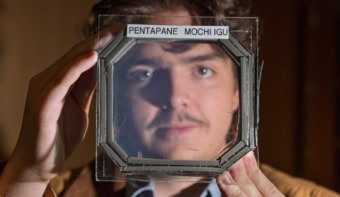
Flexible electronics, microfluidics and other cutting-edge engineering applications utilize two-dimensional (2D) metal oxides. These oxide layers are thin yet powerful sheets that combine the useful bulk electronic properties of the oxide with the high surface area activity of nanomaterials. While 2D metal oxides are incredibly useful, their synthesis is inherently difficult and costly. Ali Zavabeti and co-workers at the Royal Melbourne Institute of Technology in Australia hope to reduce these synthetic costs with their room-temperature liquid metal synthesis procedure while also providing access to new 2D oxides that could not be produced before. By utilizing different gallium alloys as solvents, Zavabeti and his fellow researchers demonstrate a low-cost and scalable procedure that yields isolated atomically thin 2D metal oxides.
Their varied electronic properties and potentially large surface area to volume ratio make two-dimensional metal oxides ideal candidates for usage within flexible electronics. Ideally, researchers would maximize this surface area to volume ratio by creating ultra-thin 2D samples. Zavabeti et al. accomplish this via a novel liquid metal synthesis.
The group demonstrates the usefulness of their procedure by creating an ultra-thin dielectric composed of HfO2 and characterizing its electronic properties. The dielectric device boasted a break-down electric field value three orders of magnitude higher than that of the traditionally prepared HfO2 device. Additionally, the device’s dielectric constant and bandgap are on par with bulk HfO2.
Using metals as solvents
Zavabeti and co-workers prepared this highly functional metal oxide using a new exfoliation technique. They prepared melts of the target precursor, e.g. Hf, Al, or Gd, and solvent galinstan – a non-toxic metal alloy containing gallium, indium, and tin. Exposing a droplet of the melt to air then allows oxidation. Finally, they isolated the formed metal oxide, e.g. HfO2, Al2O3, or GdO2, by briefly touching a substrate to the droplet.
Analysis via high-resolution transmission electron microscopy (HR-TEM) revealed pure metal oxide layers approximately 0.5 to 1 nm thick. Traditional deposition techniques (e.g. chemical vapour), produce samples with a minimum thickness of approximately 5 nm. In addition, atomic force microscopy (AFM) analysis showed a uniform surface lacking property-damaging pinholes.
This liquid metal synthetic technique relies on the self-limiting atomically thin oxide film displayed by most metals and alloys at room temperature. Thermodynamics dictate that the oxide that yields the greatest reduction in Gibbs free energy will dominate the surface. By analysing the Gibbs free energy of individual metals, the researchers determined which combination of alloy solvent and liquid metal will produce the target metal oxide.
The researchers also describe a liquid suspension technique where they bubbled air through the metal melt. The target metal oxides form in this bubble and are suspended in water. They believe these two synthetic methods will allow other previously unattainable metal oxides to be formed and characterized, many of which “are of exceptional importance because of their various electronic, magnetic, optical, and catalytic properties.”
Full details are reported in Science.



